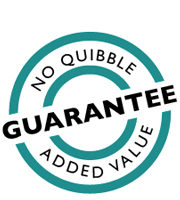Business valuation

There are several circumstances when it is important to estimate the fair or economic value of a private business (i.e. one that is not publicly traded on a stock market). These include:
- When seeking equity finance from business angels or venture capitalists
- When seeking to acquire a business
- When seeking to sell a business
- When merging two businesses and exchanging shares in one company for shares, or a mix of shares and cash in the other company
- When one or more shareholders is seeking to sell shares
- Upon the death of a shareholder
- When reaching a financial settlement during divorce
Whilst there are many different ‘scientific’ techniques that can be used to help determine the value of a business, ultimately, the value of a business is what someone is prepared to pay for it. This means business valuation is primarily an art, but nevertheless an art that is informed by science.
For a public limited company, assessing its value is more straightforward. This is because its shares are publicly traded on a stock market. The value of the company, known as its enterprise value, is simply the number of shares in circulation multiplied by the share price plus the sum of all its borrowings. At any one time, the prevailing share price may be considered to be above or below fair value. This is because there are many factors that combine to affect the day to day price of a company’s shares. These include unsubstantiated rumours about either the company or its competitors, momentum investing, panic or profit-taking selling, misinterpretation of information and many others. Nevertheless, in the long-run, it does appear that ‘truth does get out’ and that stock markets function more or less efficiently with share prices being anchored, albeit elastically, to some underlying notion of fair economic value. Learn more in the article entitled Shareholder Value Explained.
Commonly used business valuation techniques include:
- Discounted free cash flow
- Earnings multiples
- EBITDA multiples
- Owner’s benefit multiples
- Asset based
- Liquidation value
- Entry cost
- Rule of thumb
Discounted free cash flow – This methodology values a business by estimating its future free cash flows and discounting by an weighted average cost of capital to arrive at a net present value (NPV) i.e. the value of the future free cash flows to investors in today’s money. This method is generally suitable for mature stable businesses with good long term prospects. However, the NPV is highly sensitive to the cost of capital assumption and estimating future free cash flow performance is always prone to error. Learn more in the article Shareholder Value Explained.
Earnings multiples – Earnings multiples are commonly used to value businesses with an established, profitable history. A price earnings (P/E) ratio is used to multiply the current underlying earnings (i.e. post tax profit adjusted for non reoccurring one-off costs or gains) by the P/E ratio to estimate the business’s enterprise value. This method benefits from simplicity, but the choice of P/E ratio is arbitrary. Furthermore, current earnings include depreciation and amortisation of goodwill, both of which are subjective and non cash costs. Current earnings may also be a poor reflection of future earnings.
EBITDA multiples – EBITDA multiples work in the same way as earnings multiples except a multiple is applied to underlying EBITDA (earnings before interest, tax, depreciation and amortisation of goodwill). As with earnings multiples, the choice of multiple is arbitrary and current EBDITDA may be a poor reflection of future EBITDA.
Owner’s benefit multiples – As with earnings and EBITDA multiples, the owner benefit methodology applies a multiple to an estimate of the owner’s financial benefit from owning the business. This is usually derived by starting with the underlying profit before tax and adding back the owner’s salary and benefits, loan interest, depreciation and amortisation of goodwill, then subtracting an estimate for the likely annual capital expenditure. The resulting figure is considered to be the underlying financial benefit of the business to the owner in the current year. Typically a small business would be worth a one to three times multiple of this figure depending on a number of factors which are discussed below. Note: Interest is added back as it is assumed the seller will repay any outstanding loans which is normally the case.
Asset based – The starting point for this valuation is the net book value of capital employed (i.e. the sum of all the assets less all the liabilities but excluding shareholder funds and borrowings as per the balance sheet) adjusted to reflect current market rates. This method is most appropriate for businesses rich in tangibles assets. However, just because a business is asset rich, it does not mean that it uses them efficiently nor that it is or will be profitable. Likewise, a business with limited tangible assets (i.e. a firm of lawyers with little more than office equipment) may be extremely profitable.
Liquidation value – The liquidation methodology determines the value of a company’s assets if it were forced to sell them in a short period, usually no more than 12 months. Once the business’s liabilities are subtracted from the liquidation value of the assets, what is left can be considered to be the floor price of the business. This method is commonly used when winding up a business.
Entry cost – This method estimates the costs involved in setting up a business from scratch. Here, costs such as purchasing the assets, recruiting and training staff, developing products, building up a customer base, etc are the starting point for the valuation. However, this method fails to attach any value to the intangible assets of the business, such as the value of any intellectual property or the value of customer relationships, and in several types of businesses (i.e. creative services and professional services) these intangibles will represent the majority of the business’s worth. Furthermore, the entry cost may be a poor reflection of future profitability.
Rule of thumb – In some industries, it is common to value a business on a rule of thumb basis. For example, the number of outlets for an estate agency business or recurring fees for an accountancy firm, or a x1 multiple of revenue for a chiropractor clinic. A rule of thumb should, however, only be used as a starting point for valuing a business.
When valuing a business, all of the above ‘scientific’ methods have intrinsic flaws, but nevertheless do enable some stakes to be put in the ground. Unsurprisingly, different methodologies produce different valuations and sometimes, wildly different valuations. Whichever method or methods are used, it is also important to consider a number of other factors that can have a significant impact on the value of a business. These include:
- Growth trajectory – A fast growing business is worth more than a slow growing business is worth more than a stable business is worth more than a declining business all other things being equal.
- State of the economy – Businesses are generally worth more in a buoyant economy than when in recession.
- Sensitivity to the economic cycle – Some business are more sensitive to the economic cycle than others i.e. automotives versus food retailers versus insolvency practitioners. A business is generally worth more the less sensitive it is to the economic cycle.
- Seasonality – Seasonal businesses are worth less than those which are not. This is because a bad season, for example due to adverse weather, can have a severe impact on financial performance.
- The number of potential buyers – The more buyers that express an interest in a business, the more a business is likely to be worth.
- Owner impact – Businesses that are heavily dependent on its owners are worth less than those which are not.
- Sale circumstances – During a distressed sale, say due to the ill health or death of an owner, a quick sale risks realising less than fair value.
Lastly, when considering whether to buy into a business, it is important to remember that the asking price is not the same as the purchase price and indeed, this can often be well above fair value. This could be a negotiating position or because emotionally attached owners want to factor in something for their hard work. However, for a prospective buyer, this is not relevant as the only consideration is to assess the value of the business based on its current and likely future performance. And as previously noted, a business is ultimately only worth what someone is willing to pay for it.
To discuss your business critical issue
Please call Paul New on 020 8390 9972 or 07790 501225 or send a message.







